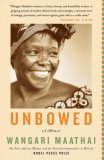Summary | Excerpt | Reading Guide | Reviews | Beyond the Book | Readalikes | Genres & Themes | Author Bio

Critics' Opinion:
Readers' Opinion:
First Published:
Oct 2006, 352 pages
Paperback:
Sep 2007, 352 pages
 Book Reviewed by:
Book Reviewed by:
BookBrowse Review Team
Buy This Book
Ironically, the missionaries described such instruments in detail, but then encouraged the local people who had converted to Christianity to destroy them. Even as they trivialized many aspects of the local culture, including various art forms, they also recorded them and saved some of the artifacts, which now reside in European museums. I have heard that one of these gichandi is in a museum in Turin, Italy.
To consolidate their hold on their new territories in Africa, during the first decade and a half of the twentieth century the European governments encouraged people of European descent—among them South Africans, Australians, Canadians, Britons, Germans—to settle in their colonies. In Kenya, these settlers began arriving in increasing numbers and the British authorities gave them land in the highlands. The settlers found the highlands very attractive for the same reasons the local people do: the soil was fertile, debilitating diseases like malaria were absent, and it was neither too hot nor too cold—perfect weather.
The settlers received title deeds to most of the land in areas where they preferred to settle, near emerging city centers or regions that seemed promising for successful wheat, maize, coffee, and tea farming, and for grazing livestock. To make way for them, many people were displaced, including a large number who were forcibly relocated to the Rift Valley. Those who refused to vacate their land were transported by the British elsewhere.
By the 1930s the British had ensured that native communities, including Kikuyus, had been restricted to designated regions known as native reserves while their land was subdivided among the new arrivals. People within the native reserves were able to keep their land. Ihithe was in the Kikuyu reserve and my father owned land there. Some he had bought and some he inherited from his father, who purchased it when he migrated to Ihithe from Kahiga-ini, a village nearby. After both the First and Second World Wars, war veterans came to Kenya and received land—one of the ways the British government thanked them for defending the crown. By the early 1950s, about 40,000 settlers, most of them British, had moved onto about 2,500 farms in what became known as the “white highlands,” which included the hills outside Nairobi, the highlands of the central and western regions, and large tracts of grassland in the Rift Valley.
However, even after the arrival of missionaries and then the British administration, pockets of the old way of life persisted. Three of my grandparents never converted to Christianity, but I am informed that my mother’s mother was baptized on her deathbed. Their children, however, converted as adults, the first generation of Kikuyus to become almost wholly Christian. They must have been among the early converts of their generation, because when I was growing up, my uncle Kamunya, charismatic and progressive, was already a leader in the African Independent Church. This church embraced both Protestant and Catholic teachings as well as aspects of Kikuyu culture discouraged in the other two denominations.
Excerpted from Unbowed by Wangari Maathai Copyright © 2006 by Wangari Maathai. Excerpted by permission of Knopf, a division of Random House, Inc. All rights reserved. No part of this excerpt may be reproduced or reprinted without permission in writing from the publisher





The House on Biscayne Bay
by Chanel Cleeton
As death stalks a gothic mansion in Miami, the lives of two women intertwine as the past and present collide.

The Flower Sisters
by Michelle Collins Anderson
From the new Fannie Flagg of the Ozarks, a richly-woven story of family, forgiveness, and reinvention.

The Funeral Cryer by Wenyan Lu
Debut novelist Wenyan Lu brings us this witty yet profound story about one woman's midlife reawakening in contemporary rural China.
Your guide toexceptional books
BookBrowse seeks out and recommends the best in contemporary fiction and nonfiction—books that not only engage and entertain but also deepen our understanding of ourselves and the world around us.